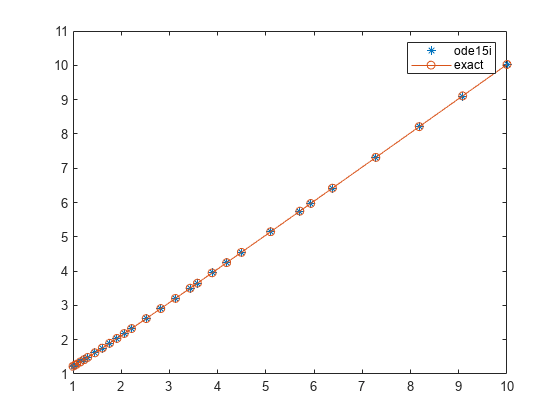decic
Compute consistent initial conditions for ode15i
Syntax
Description
[ uses y0_new,yp0_new]
= decic(odefun,t0,y0,fixed_y0,yp0,fixed_yp0)y0 and yp0 as
guesses for the initial conditions of the fully implicit function odefun,
holds the components specified by fixed_y0 and fixed_yp0 as
fixed, then computes values for the nonfixed components. The result
is a complete set of consistent initial conditions. The new values yo_new and yp0_new satisfy odefun(t0,y0_new,yp0_new)
= 0 and are suitable to be used as initial conditions with ode15i.
Examples
Input Arguments
Output Arguments
Tips
The
ihb1daeandiburgersodeexample files usedecicto compute consistent initial conditions before solving withode15i. Typeedit ihb1daeoredit iburgersodeto view the code.You can additionally use
decicto compute consistent initial conditions for DAEs solved byode15sorode23t. To do this, follow these steps.Rewrite the system of equations in fully implicit form
f(t,y,y') = 0.Call
decicto compute consistent initial conditions for the equations.Specify
y0_newas the initial condition in the call to the solver, and specifyyp_newas the value of theInitialSlopeoption ofodeset.
Version History
Introduced before R2006a

